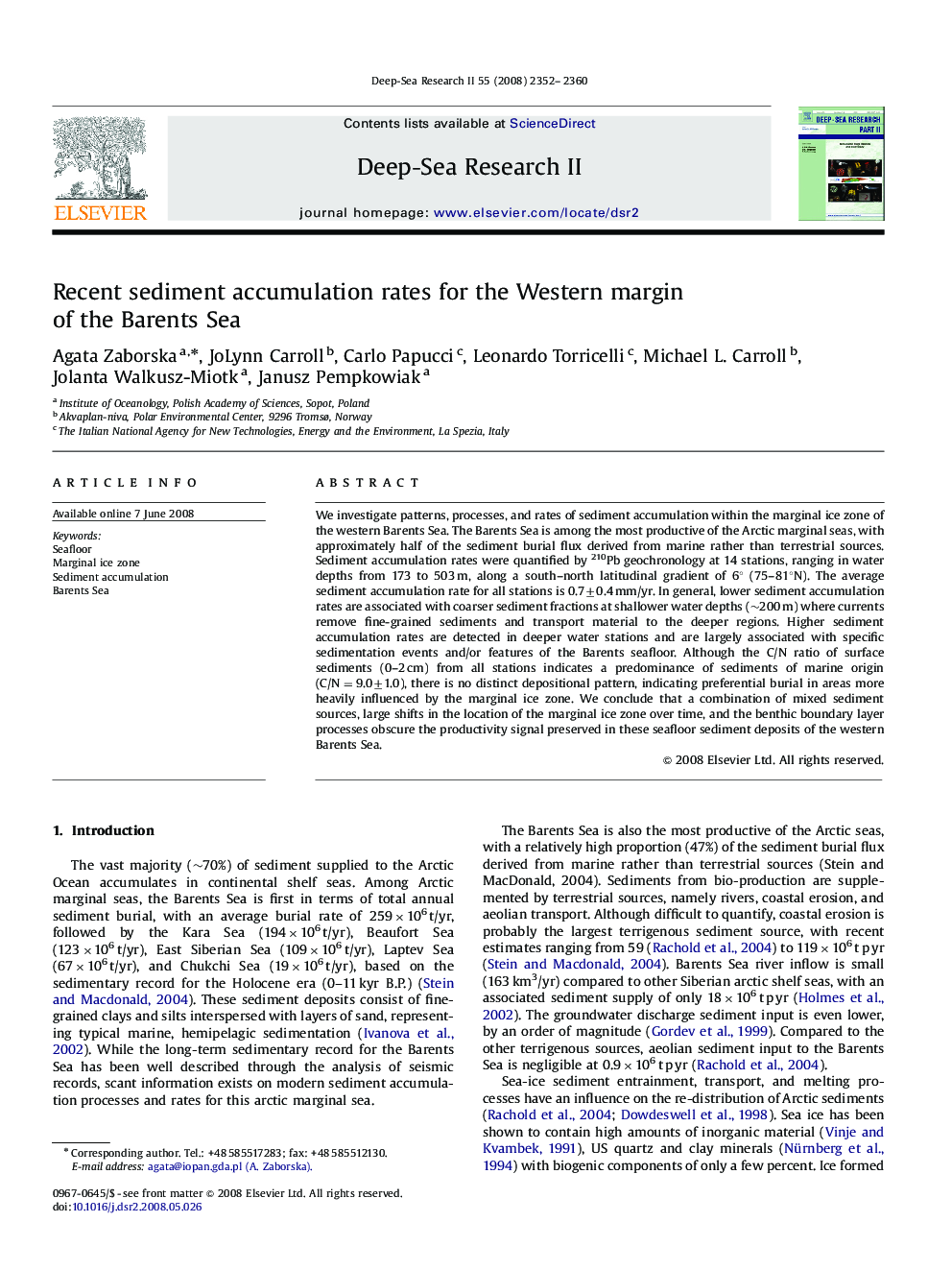| Article ID | Journal | Published Year | Pages | File Type |
|---|---|---|---|---|
| 4537957 | Deep Sea Research Part II: Topical Studies in Oceanography | 2008 | 9 Pages |
We investigate patterns, processes, and rates of sediment accumulation within the marginal ice zone of the western Barents Sea. The Barents Sea is among the most productive of the Arctic marginal seas, with approximately half of the sediment burial flux derived from marine rather than terrestrial sources. Sediment accumulation rates were quantified by 210Pb geochronology at 14 stations, ranging in water depths from 173 to 503 m, along a south–north latitudinal gradient of 6° (75–81°N). The average sediment accumulation rate for all stations is 0.7±0.4 mm/yr. In general, lower sediment accumulation rates are associated with coarser sediment fractions at shallower water depths (∼200 m) where currents remove fine-grained sediments and transport material to the deeper regions. Higher sediment accumulation rates are detected in deeper water stations and are largely associated with specific sedimentation events and/or features of the Barents seafloor. Although the C/N ratio of surface sediments (0–2 cm) from all stations indicates a predominance of sediments of marine origin (C/N=9.0±1.0), there is no distinct depositional pattern, indicating preferential burial in areas more heavily influenced by the marginal ice zone. We conclude that a combination of mixed sediment sources, large shifts in the location of the marginal ice zone over time, and the benthic boundary layer processes obscure the productivity signal preserved in these seafloor sediment deposits of the western Barents Sea.
